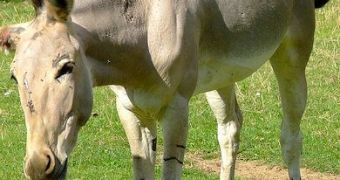Scientists from the University of Florida found the donkey's wild ass ancestor. They say that more than five thousand years ago, humans in North Africa domesticated the wild donkey's ancestors, twice. This was extremely important at the time as it was crucial for ancient cattle herders to become more mobile and adapt faster because of the extension of the Sahara desert.
Donkeys were also very useful because they helped the expansion of over-land trade and they contributed to the growth in the early Egypt state. This is why researchers wandered who were these animals and how did humans manage to domesticate them and make them a part of their life.
Scientists say that donkeys are divided into two genetically different categories and so they believe that donkeys have two ancestors. Until recently, these ancestors were believed to be the Somali wild ass and the Nubian wild ass, both subspecies of the African wild ass. But after analyzing mitochondrial DNA from archaeological sites, museums or live animals, researchers concluded that the Somali wild ass or any close relative of this subspecies, was not one of the two ancestors. They do not know exactly where did this ancestor came from, maybe it's from an extinct population of wild ass or simply from another region.
As for the Nubian ass ancestor, research confirmed the believe. Thanks to their genetic analysis, evidence that humans domesticated Nubian wild asses was found. This has happened multiple times, and all the while asses interbred with their wild peers.
This study also suggests that the domestication process happened in Africa, and that people then had the knowledge necessary to do so. Connie J. Mulligan, study researcher and molecular anthropologist at the University of Florida says: “That is why our paper is so important. It shows not only did domestication happen in Africa, it wasn't a one-off thing, it happened over a period of time. There was local knowledge about how to do this.”
Other research have confirmed that few Somali subspecies live in zoos and wildlife preserves, and almost 600 still live in the wild in Eritrea and Ethiopia, according to Live Science.
As for the Nubian wild ass, it was last seen in the Red Sea Hills of Sudan in the late 20th century, there is high possibility that it may recently have become extinct. One of the study researchers and a biologist at the University of Porto, Portugal, Albano Beja-Pereira, found evidence of its existence in the mid-1990s.

 14 DAY TRIAL //
14 DAY TRIAL //